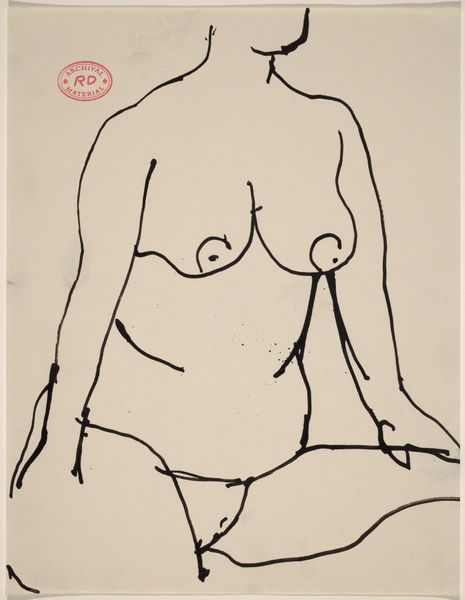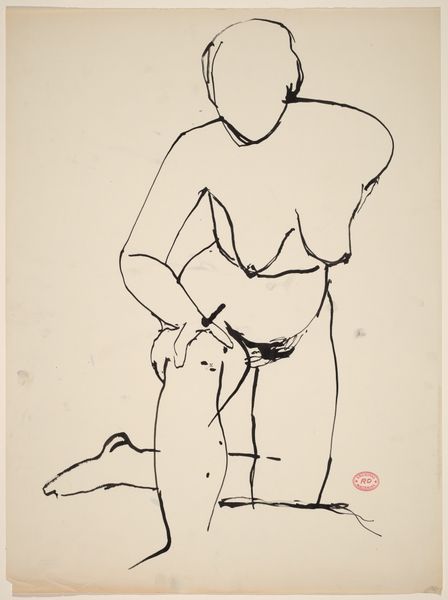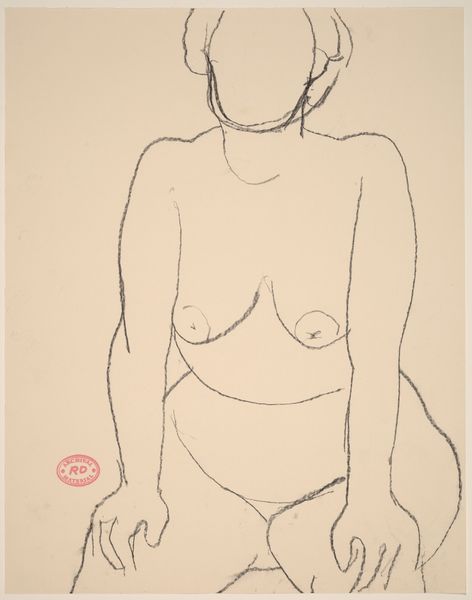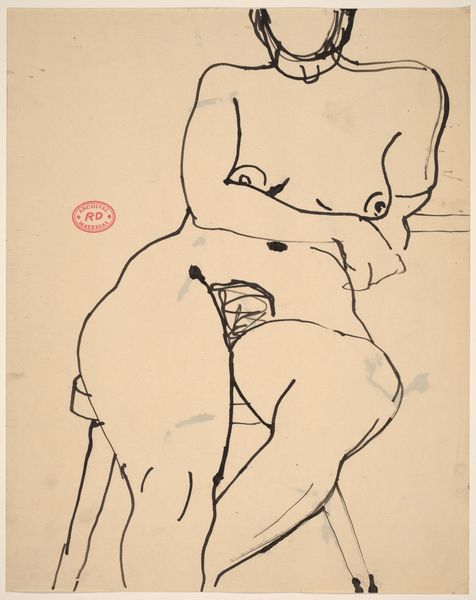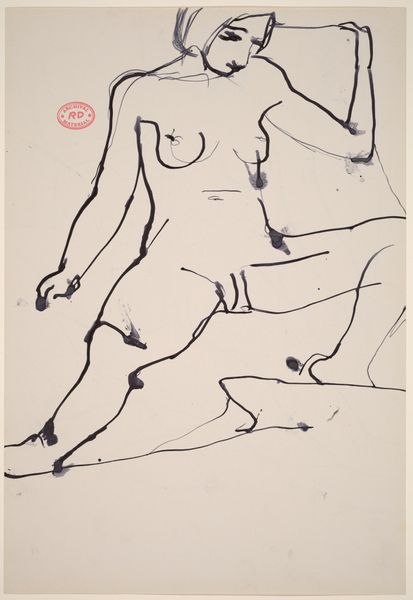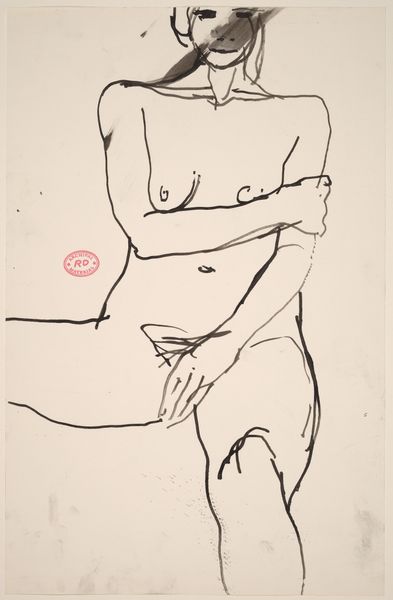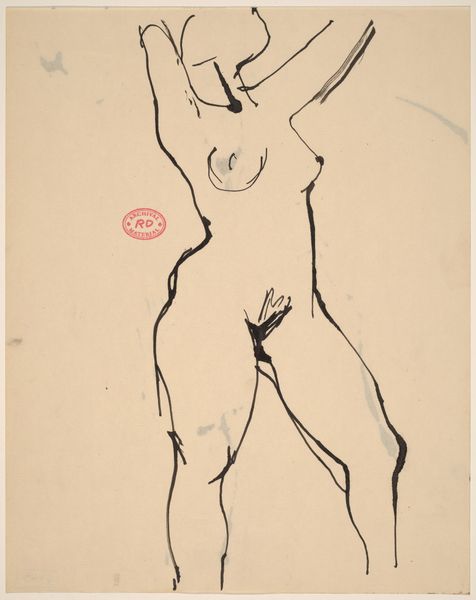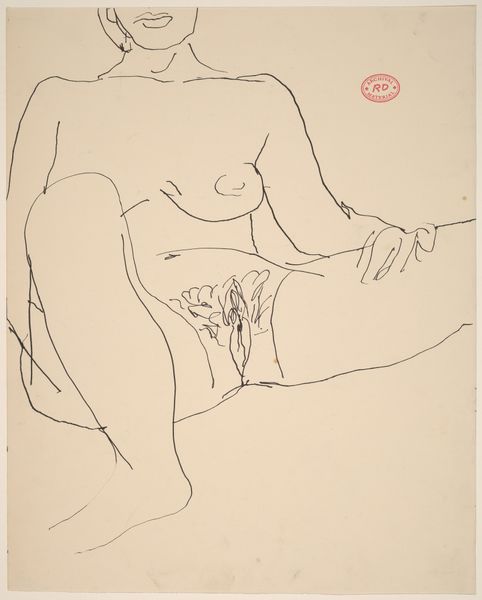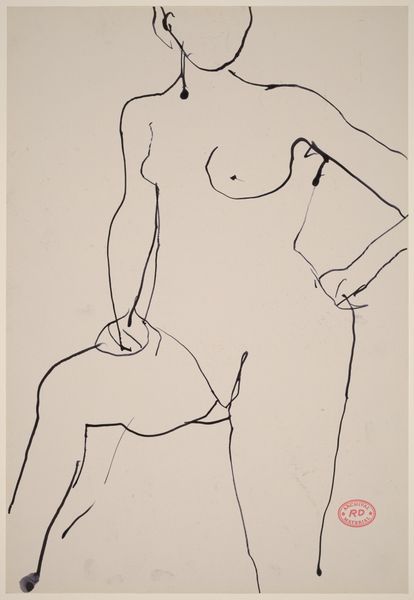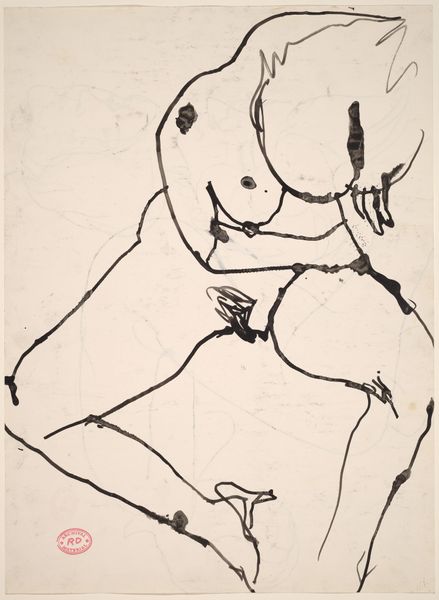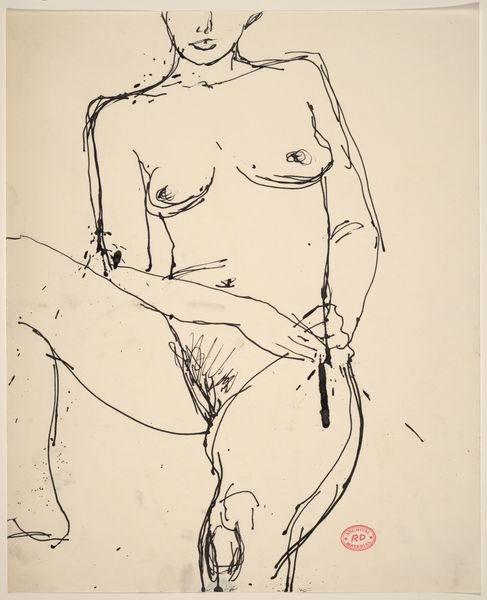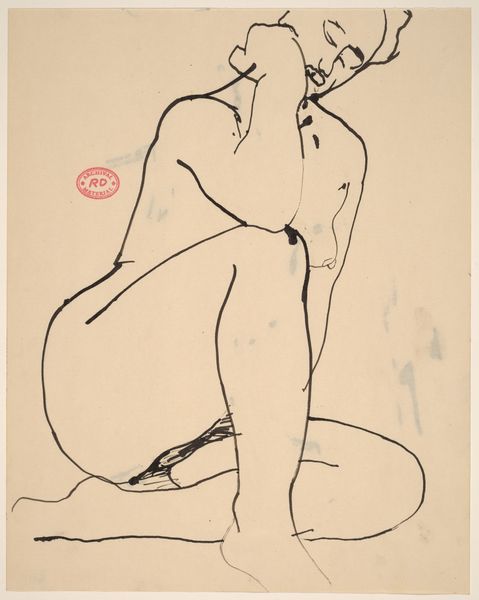![Untitled [seated female nude resting on right arm] by Richard Diebenkorn](/_next/image?url=https%3A%2F%2Fd2w8kbdekdi1gv.cloudfront.net%2FeyJidWNrZXQiOiAiYXJ0ZXJhLWltYWdlcy1idWNrZXQiLCAia2V5IjogImFydHdvcmtzL2FlYjgyNDNkLTkwZGItNDNmMS05MTlmLTJlYTY5MTczYTc0NC9hZWI4MjQzZC05MGRiLTQzZjEtOTE5Zi0yZWE2OTE3M2E3NDRfZnVsbC5qcGciLCAiZWRpdHMiOiB7InJlc2l6ZSI6IHsid2lkdGgiOiAxOTIwLCAiaGVpZ2h0IjogMTkyMCwgImZpdCI6ICJpbnNpZGUifX19&w=3840&q=75)
Untitled [seated female nude resting on right arm] 1955 - 1967
0:00
0:00
drawing, ink
#
drawing
#
imaginative character sketch
#
ink drawing
#
pen sketch
#
cartoon sketch
#
figuration
#
personal sketchbook
#
bay-area-figurative-movement
#
ink
#
idea generation sketch
#
ink drawing experimentation
#
pen-ink sketch
#
arch
#
sketchbook drawing
#
nude
#
sketchbook art
Dimensions: overall: 35.2 x 27.6 cm (13 7/8 x 10 7/8 in.)
Copyright: National Gallery of Art: CC0 1.0
Curator: We’re looking at Richard Diebenkorn’s “Untitled [seated female nude resting on right arm]”, likely created between 1955 and 1967. It’s an ink drawing. My first thought is that it is quite intimate. The simplicity of the line and the resting pose creates a relaxed and vulnerable scene. Editor: Relaxed is one word, I see a studied detachment. The line, while simple, seems to deliberately avoid contouring the body in a way that might sentimentalize the subject. It is rendered in ink on paper, emphasizing the stark contrasts. The negative space, equally important to the marks themselves, really flattens the composition. Curator: That flatness contributes, I think, to the drawing’s modernity, placing emphasis on the surface and medium itself, which underscores Diebenkorn’s interest in Abstract Expressionism, as the drawing balances abstraction and representation. Editor: And challenges it, perhaps. Consider the historic position of the female nude, and the almost ubiquitous male gaze in the genre. Here, the facelessness—the avoidance of specific detail in the head and facial features—works against a reading that simply sexualizes or objectifies. It’s as if the artist is critiquing that very history, suggesting a removal of identity rather than reinforcing it through idealized beauty. The rough marks become crucial, rejecting any illusion of effortless artistry, instead highlighting the labor of observation and construction. Curator: The rapid execution evident in the ink suggests a sense of immediacy, of capturing a fleeting moment or an initial idea. Notice how the strokes around her torso and legs overlap, implying dimensionality without committing to conventional shading. Editor: Precisely, and that's where I read its resistance. Diebenkorn, even through line economy, opens a conversation about art as an intersectional practice. Here, the female body can serve as both object of artistic investigation and a canvas where histories of representation can be revised and challenged. Curator: Well, looking at this now, I see how he used such a minimalist style to depict the figure, and also suggest larger historical and political viewpoints. Editor: Exactly, it asks the viewer to be active. It goes beyond what is represented to ask *why* and *how* we see what we do, prompting us to engage critically with the artist’s choices and the image's cultural baggage.
Comments
No comments
Be the first to comment and join the conversation on the ultimate creative platform.
